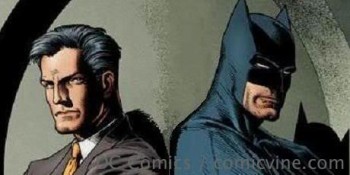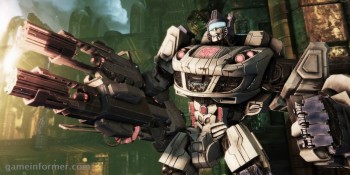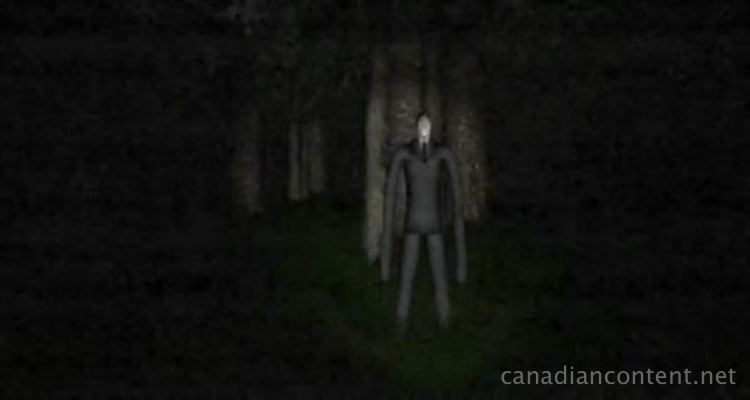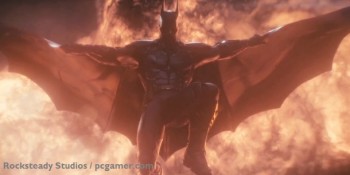Nick Rose once again fills in for Charissa as she spends some time in the City of Light.
Being a fan is a full-time job. After all, we’re the upholders of a particular medium or franchise, a loyal community of people sharing a vested interest in the development and longevity of many different characters, properties, and fictional universes. We’ve eagerly watched as our prized possessions have evolved over decades, crossing media and other boundaries. We are the last line of defense for all we hold dear.
Part of this special relationship stems from its early formation. From youth forward, we’ve remained steadfast in our followings. As we matured, so did our perception of everything. Batman wasn’t cool only because his outfit was eye-catching and he could beat up bad guys. He speaks to the duality in all of us, the darkness we hone to bring light to a dangerous world. Similar insights come when we recognize Spider-man’s angst versus his physical abilities, the X-Men’s struggle for acceptance and identity, Superman’s coming to terms with his humanity, and so on. We go from blind adoration of these characters to passionate supporters of the themes and legacies they uphold. As they combat physical and existential obstacles, so do we.
In recent years, Hollywood has been keen on developing cinematic versions of our beloved heroes. As we watch them grace the big screen, a magical thing happens: part of us relives those moments of our youth. Sure, we’re not necessarily 10 inches from a television screen, drooling at everything in sight. But can we honestly say that wolfing down popcorn in an IMAX or regular movie theater doesn’t slightly resemble our Saturday mornings from so long ago?
Recent Hollywood fare seems partial to “reimagining” — and I use that term loosely — popular franchises from the late 80s and 90s. Michael Bay‘s first three Transformers films grossed over $1 billion worldwide, and the fourth entry topped box offices this weekend. In a similar vein, the Bay-produced reboot of the Teenage Mutant Ninja Turtles hits theaters next month. I’d like to focus on these two recent examples mainly because they seem to encapsulate a lot of controversy surrounding fandom and movies in general.
As we left the theater after last week’s premiere of Transformers: Age of Extinction (AoE), something familiar happened. The audience, comprised of loyal fans willing enough to sacrifice sleep in favor of being the movie’s “first” viewers, began to exit the theater, wrapped up in dialogues about the film. As someone who has attended a number of these premieres, I can state with authority that any speaker you overhear neatly falls into three categories. The “Dude Oh My God” is one who has been enthralled by the film from start to finish. Whatever technical or narrative flaws exist have been completely disregarded, replaced by intense admiration, gaping mouth included. On the opposite end is “The Nitpicker,” whose premature negative attitude forced he/she to criticize the film’s shortcomings from start to finish. Lastly, you might encounter an occasional “In-Betweener,” someone on the fence and not opposed to a second viewing to cement his/her opinions.
A strong number of Nitpickers were biting into Age of Extinction as soon as the end credits began rolling. Chief among their numerous complaints was a so-called “mishandling” of the famed Dinobots. (Mild spoilers to follow.) Ever since the teaser trailer for AoE debuted during this year’s Super Bowl, Grimlock‘s role in the film was perhaps the most anticipated element. However, the payoff was less than satisfying for many.
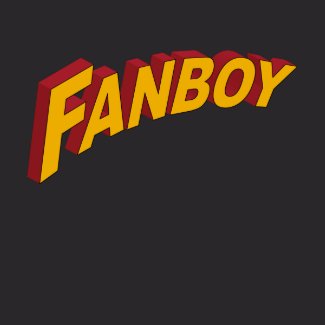
Some people wear it like a crown. Others, not so much. Photo source: www.geekicorn.com
The mostly silent, savage portrayal of Grimlock and his companions was met with widespread disappointment, to the point that one viewer angrily concluded, “That was NOT the Dinobots.” Part of me wished to confront him and politely convince him, “Well, in this interpretation, it is.” Given his dismissive attitude toward friends who uttered the same thing, I held my breath. And though this gentleman’s reaction is his own and holds no influence on mine, I’ve found that negative attitudes like this one are an insult to fellow fans and hold the potential to ruin what makes our communities so great in the first place.
If you do not agree with a depiction of a certain event, character, or story, that’s your right to do so. With what we pay to see movies, you can bet we’ll be on our game to assess the film’s quality. But we need to be more realistic about what we are watching on the big screen. Nothing will ever replace or replicate our childhood experiences with these properties. That’s part of the beauty of it! Believe me: if it cost $10 to $15 for me to relive a cartoon-filled Saturday morning for a few hours, I’d be broke.
What we’re fortunate enough to have now are filmmakers who have made a professional career out of adapting other people’s stories and ideas. You can label their practices unoriginal if you want to, but isn’t there something exciting about a live-action version of things we once thought could only exist in animation? Even if we have seen it before, don’t you get amped up by watching Leonardo and his brothers showing The Foot Clan who’s boss? I know I do. And don’t misunderstand me: I am in no way suggesting we all abandon our right to a critical opinion. Isn’t there a well-known quote about opinions and a certain body part? Never mind …
Trailer for the upcoming TMNT reboot. Reactions to this trailer have been as extreme as “my childhood just died.” Video source: YouTube
Nostalgia is a strange thing. It attempts to recapture a past condition we know is unreachable. Even if we attain some semblance of it, be it an old cartoon, a faded comic book, or a dusty video game cartridge, the experience is temporary, if not totally fleeting. An honest acceptance of this reality would go a long way to renewing the general awesomeness that is being a fan. If you want to revel in the beauty of the original Ninja Turtles or Transformers, then by all means, do so. But don’t hold current movies to the standards of your 7-year-old self. Chances are you’ll always end up disappointed.
